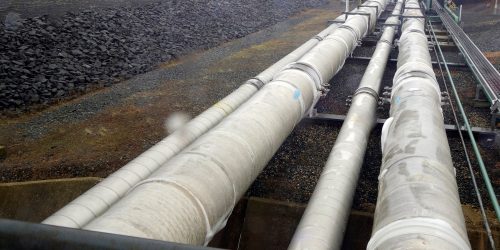Paris, (APP – UrduPoint / Pakistan Point News – 23rd Jun, 2022 ) :Natural gas has emerged as a weapon of war between Russia and Europe since Moscow and Ukraine stand-off.
Here is how the standoff developed: – Nord Stream 2 halted – On February 22, 2022, German Chancellor Olaf Scholz says he is suspending the Nord Stream 2 pipeline project with Russia in response to Moscow’s recognition of two breakaway regions in Ukraine.
The project has long been a source of tension with Berlin’s allies in the United States and Europe, who worry it would increase Germany’s energy dependence on Russia.
Ukraine also fears it will lose revenues from gas transit if Nord Stream 2, which would deliver Russian gas to Germany via the Baltic Sea, goes ahead.
- Gas prices soar – On February 24, Russia-Ukraine war kicked off.
Gas and oil prices soar on fears of possible cuts in supplies.
On March 2, the European Union cuts seven Russian banks off from the SWIFT banking transfer system.
But it spares two major lenders with strong ties to the energy sector, reflecting the dependence of several EU states on Russian gas, notably Germany, Italy, Austria and Hungary.
In 2021, Moscow provided nearly 40 percent of the EU’s gas needs.
- US embargo – On March 8, President Joe Biden bans US imports of Russian gas and oil. The EU says it will cut its imports of Russian gas by two-thirds this year and Britain says it will phase out its Russian energy imports by the end of 2022.
- Russia’s riposte – On March 23, Russian President Vladimir Putin bans European gas customers from paying their bills in Dollars and Euros, in response to the freezing of some $300 billion in Currency reserves held by Russia overseas.
He announces that Moscow will now only accept payment in rubles from “unfriendly” countries, including EU nations.
The European Commission warns EU members that by paying in rubles they would be violating international sanctions against Moscow.
The United States and the EU discuss alternative sources. Washington agrees to provide Europe with an extra 15 billion cubic metres of liquified natural gas this year.
- Taps turned off – On April 27, Russian giant Gazprom cuts off gas supplies to Bulgaria and Poland, in a move European Commission chief Ursula von der Leyen describes as “blackmail”.
She says the two EU and NATO members are now receiving gas from their EU neighbours.
On May 21, Russia cuts gas to neighbouring Finland, which has refused to pay in rubles and angered Moscow by asking to join NATO.
The Netherlands and Denmark are also cut off after refusing to pay in rubles.
- No embargo – On May 30, EU leaders agree to stop most Russian oil imports by the end of the year, but put off a ban on Russian gas.
- Pressure on Europe – In mid-June, Gazprom drastically cuts daily gas supplies to Germany via the Nord Stream pipeline, causing prices to soar.
Citing a technical problem, Gazprom reduces deliveries by 40 percent, then another 33 percent, in the run-up to a June 23-24 EU summit which is expected to grant Ukraine membership candidate status.
On June 23, Germany moves closer to rationing gas, raising its supplies alert level to the second of three stages.
Other EU members also look for ways to offset their dwindling gas supplies, either by finding new suppliers or switching to alternative energy sources.
Austria announces plans to reopen a coal-fired power station while France and Italy take stakes in a giant Qatari gas field.





